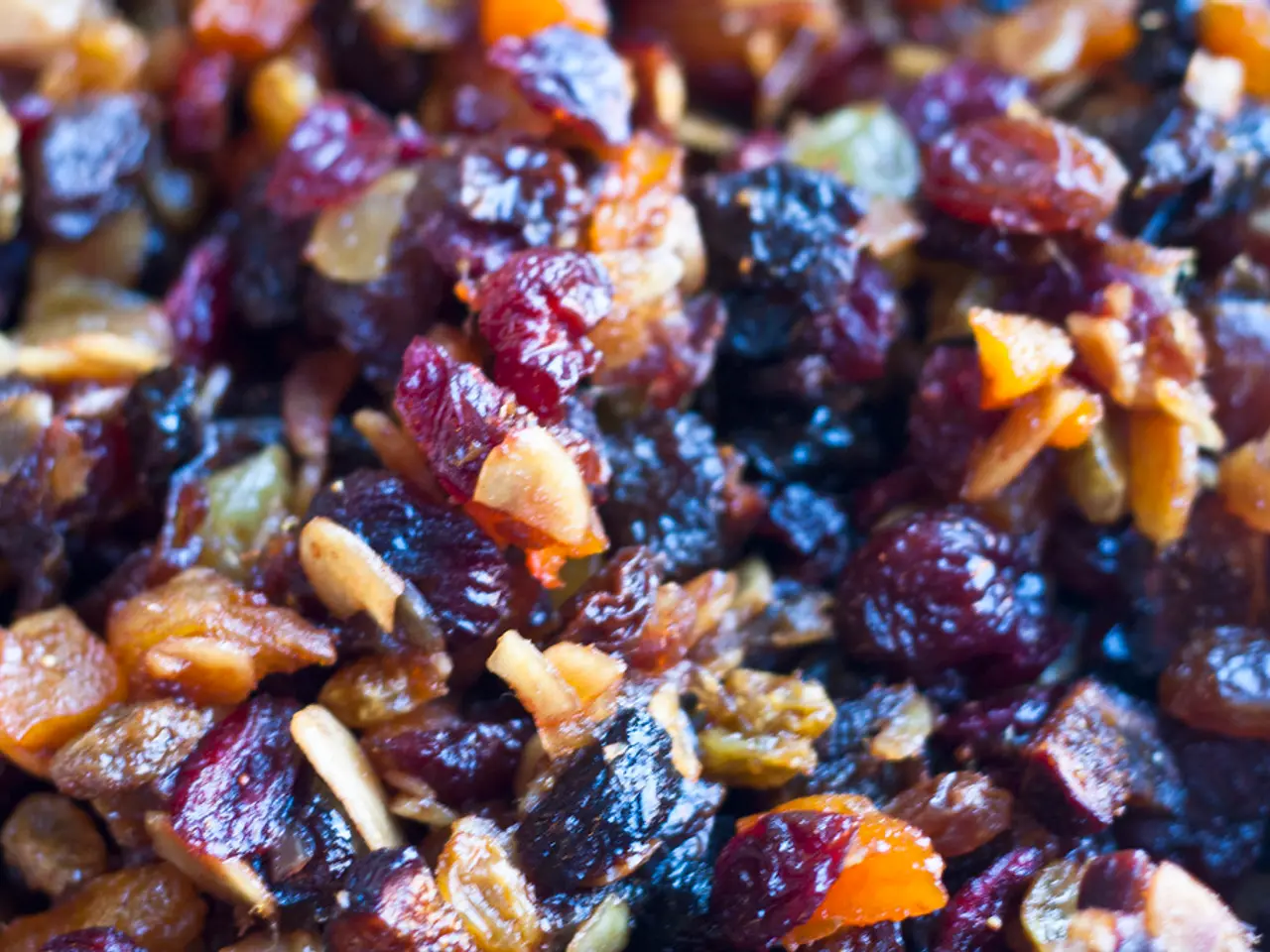Pure, Natural Fats and Oils Remaining Untouched by Manufacturing Processes
========================================================
In the kitchen of many home cooks, a diverse array of fats and oils are used, with some reserved for cooking and others as finishing touches. This approach to fats is rooted in tradition, as demonstrated by the author's preference for fats that would have been available two centuries ago and produced through natural processes.
Grass-fed butter, coconut oil, pastured lard, and extra virgin olive oil are the traditional fats of choice for cooking and finishing dishes, each offering unique flavors, smoke points, and nutritional benefits.
Grass-fed butter, prized for its rich, nutty flavor, is often used in baking, sautéing, and finishing dishes. Its nutty browned butter flavor adds depth to many dishes, and it contains fat-soluble vitamins such as A, D, and K2 beyond just fat and calories.
Coconut oil, with its subtle coconut flavor, is commonly used in baking and medium-heat cooking. It is rich in medium-chain triglycerides (MCTs), which are metabolized differently and can offer quick energy.
Pastured lard, highly versatile, is ideal for frying, sautéing, baking (notably in flaky pastry dough), roasting, and as a finishing fat. It adds moisture and a mild flavor while providing fat-soluble vitamins and is valued for its culinary properties such as creating tender, flaky textures.
Extra virgin olive oil (EVOO) is best used for low-heat cooking, roasting, and primarily as a finishing oil to impart fruity, peppery notes and antioxidants. EVOO is particularly rich in monounsaturated fats and polyphenols, which have anti-inflammatory and antioxidant benefits beyond calories.
Extra virgin olive oil and grass-fed butter offer the most nourishment beyond fat and calories due to their content of antioxidants, vitamins (especially vitamin K2 in butter), and other micronutrients. Coconut oil provides metabolic benefits through MCTs, and pastured lard offers vitamin D and other fat-soluble vitamins depending on the animal diet.
The choice depends on cooking methods, with each fat offering unique benefits. To make an informed decision, consider the cooking method, flavor profile, and nutritional benefits of each fat when choosing which to use in your dishes.
| Fat Type | Cooking Use | Flavor Profile | Nutritional Highlights | |-------------------|-----------------------------------|---------------------------|------------------------------------------------| | Grass-Fed Butter | Baking, sautéing, finishing | Rich, nutty, buttery | Vitamins A, D, K2; conjugated linoleic acid | | Coconut Oil | Baking, medium heat cooking | Mild coconut flavor | Medium-chain triglycerides (MCTs) | | Pastured Lard | Frying, baking, roasting, finishing| Mild, savory | Fat-soluble vitamins (A, D), saturated fats | | Extra Virgin Olive Oil | Low-heat cooking, finishing | Fruity, peppery | Monounsaturated fats, polyphenols (antioxidants)|
[1] Nutrition and Health: Fats and Oils, Harvard T.H. Chan School of Public Health, www.hsph.harvard.edu/nutritionsource/fats-full-fat-replacements/ [3] Healthline: The Health Benefits of Coconut Oil, www.healthline.com/nutrition/health-benefits-of-coconut-oil [4] Mayo Clinic: Olive Oil: Health Benefits and Uses, www.mayoclinic.org/healthy-lifestyle/nutrition-and-healthy-eating/in-depth/olive-oil/art-20043956
- Incorporating real food into one's diet through the use of healthy fats can lead to a healthier lifestyle, as demonstrated by the preferential use of traditional fats like grass-fed butter, coconut oil, pastured lard, and extra virgin olive oil in cooking and health-and-wellness discussions.
- Science supports the use of these traditional fats, as each offers unique health benefits beyond just providing fat and calories. For example, extra virgin olive oil is rich in monounsaturated fats and polyphenols with antioxidant properties, while coconut oil can offer quick energy through its medium-chain triglycerides.
- Adopting a fitness-and-exercise routine and following a healthy-diet, such as including real food rich in healthy fats like grass-fed butter, coconut oil, pastured lard, and extra virgin olive oil, can lead to improved overall health and well-being. Nutrition plays a crucial role in this journey, so it's essential to understand the cooking uses, flavor profiles, and nutritional highlights of each fat when making informed choices for one's dishes.




